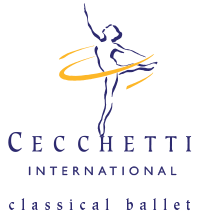1850-1928
Born in the dressing room of the Teatro Tordinona in Rome, Italy. Son of Cesare choreographer, dancer and mime, and Serafina, also a talented dancer, Enrico was one of the greatest teachers in ballet history. He studied with Lepri in Florence, who himself had studied under Blasis. His first stage performance was at the age of five; at seven he toured the United States of America dancing with his family.
1870
Debut in Milan, then toured Europe as premier danseur
1887
Debut in St. Petersburg where his brilliant technique amazed the Russians
1890
Appointed to second ballet master to the Imperial Theatres
1892
Became instructor at the Imperial School. He created the roles of Bluebird and Carabosse in Sleeping Beauty, a testimony of his virtuosity and mimetic gifts. While at the Maryinsky Theatre he created some choreography, notably refurbishing Coppélia in 1894, but his chief claim to fame lies in his extraordinary gifts as a teacher.
“While it is sufficient proof of his eminence to state that he played a considerable part in the forming of Anna Pavlova, Tamara Karsavina and Vaslav Nijinsky, it may be said that there are very few dancers of international reputation” (of that generation) … “who do not owe something or a great deal to his training.”
1902
Ballet master at the Imperial School, Warsaw
1905
Returned to Italy, then to Russia where he opened a private school in St. Petersburg and devoted much time to private work with Pavlova.
1909
He became the official teacher for Diaghilev’s Ballet Russes and created roles with that company, notably the Charlatan in Petruschka and the Astrologer in Coq d’Or
1918
He and his wife Giuseppina opened a school in London, England where his pupils included nearly every famous dancer of the time
1922
Cecchetti and his wife became respectively, Chairman and Vice Chairman of the newly founded Cecchetti Society
1923
The Cecchettis returned to Italy
1925
He became ballet master at La Scala, Milan and continuing to give occasional classes to the Diaghilev Ballet, celebrating his golden jubilee on the stage performing the role of Carabosse and made his last stage performance in 1926 as the Charlatan in Petrushka in Milan. He continued teaching in Milan until his death in 1928.
